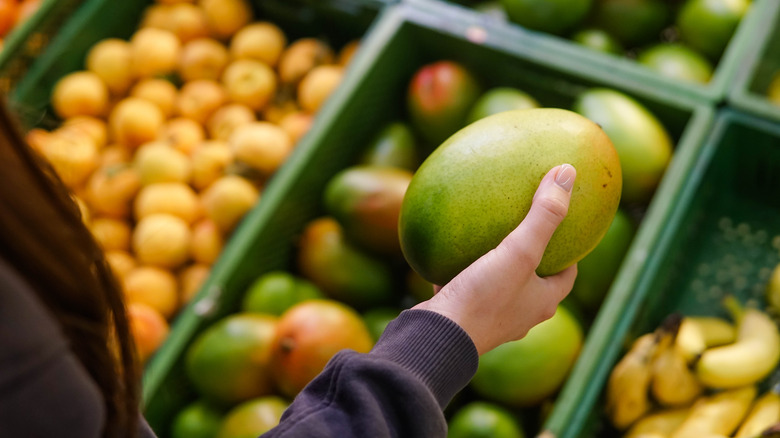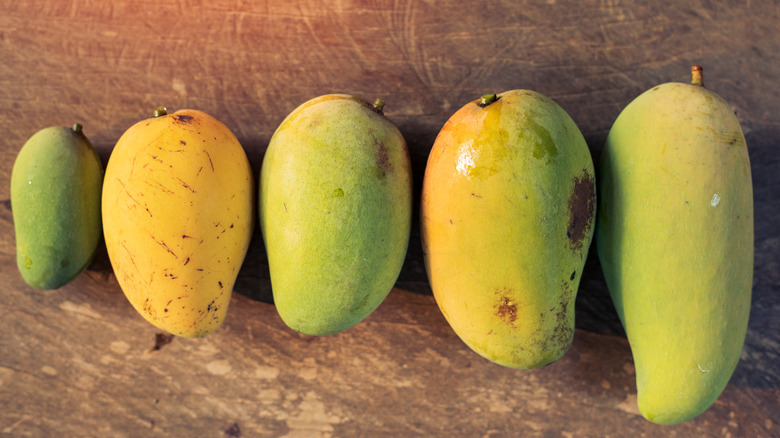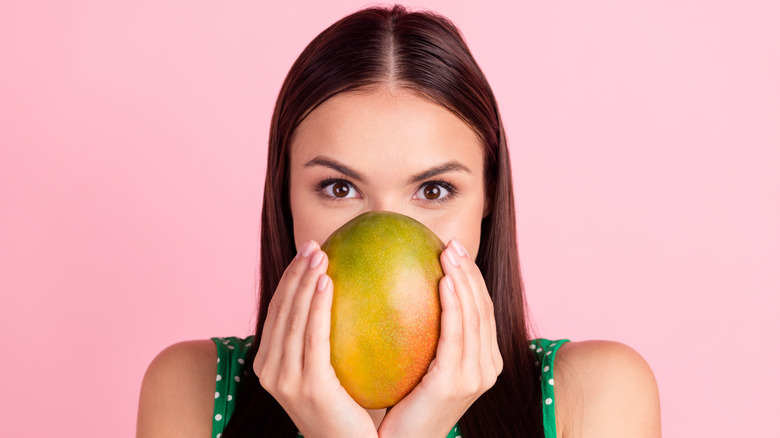Why You Shouldn't Rely On Color When Picking Out Mangoes
You're on your weekly grocery store run and for the past few days, you've been dreaming of that dazzling flavor and smooth texture only a ripe mango can provide. You make your way through the produce section and the skins of the mangoes are glowing at you in green, red, and gold despite the unflattering grocery store lighting. You want to cut into one and slurp up its marvelous meat the minute you get home. So, you naturally gravitate towards mangoes with a patch of vibrant red or gold because those are the ripest, right? Well, not necessarily.
According to the National Mango Board, a red hue can often simply be the result of a mango being exposed to sunlight. However, a project study by the Australian Centre for International Agricultural Research, as reported by the Queensland Department of Agriculture and Fisheries, indicates that sun exposure and ripeness are not always directly correlated. Other processes can come into play, including orchard management. So how should you approach your decision-making in the produce section?
Variety in color is natural
It turns out that you shouldn't rely solely on color when trying to pick out a ripe mango. By only choosing red and gold mangoes, you could miss out on the ripest mango in the whole market! Green mangoes can be ripe, too, but stores and shoppers' expectation that brighter is better makes them far less popular, says the Queensland Department of Agriculture and Fisheries. It's important to keep an open mind when shopping for mangoes so that these perfectly good products don't go to waste.
Another factor that's important to consider is what kind of mango you're buying. Per Spoon University, color has more to do with the type of mango it is than its ripeness. There are many mango varieties worldwide, ranging naturally in color from green to gold to red to orange, according to "Fruits of Warm Climates" by botanist Julia Morton (via Purdue University). So instead of relying on color, what should be your key to selecting the ripest mangoes? You should forego the eye test and rely on your hands and nose instead.
A two-step solution
The National Mango Board advises that you should give the mango a light squeeze and see what it feels like. If it's slightly soft when you grip it, bingo! You can feel confident cutting into that mango when you get home. If you're still unsure about the texture of the mango after trying this method, fear not. You can also assess the ripeness of a mango by sniffing the end where its stem once was.
If the mango gives off a sweet aroma somewhere between melon and pineapple, it is ripe and ready to eat (via Spoon University). Use this two-step method next time you're out shopping for mangoes. If you're buying mangoes in bulk, consider that you probably won't eat them all in one day. In that case, it would be wise to stagger the ripeness of the mangoes you buy and get a few that haven't yet reached peak ripeness so that you can enjoy them later on.


